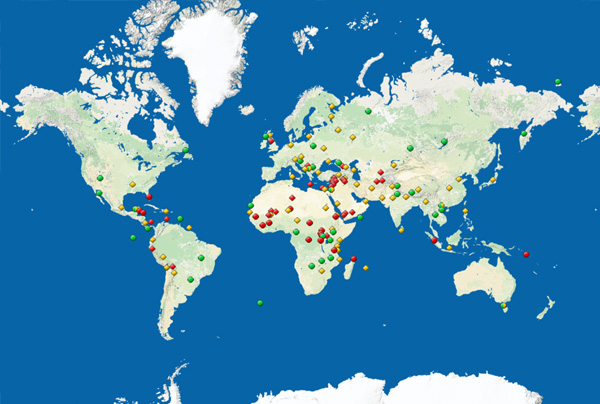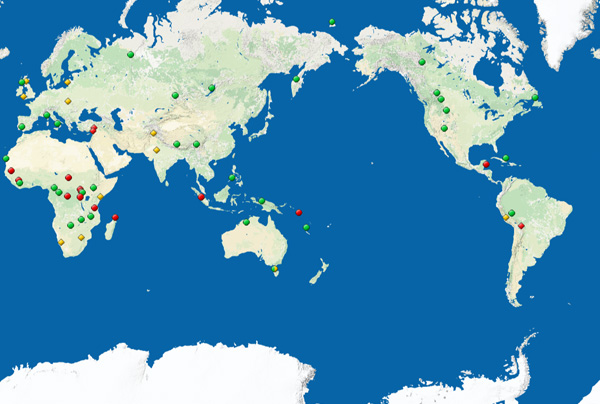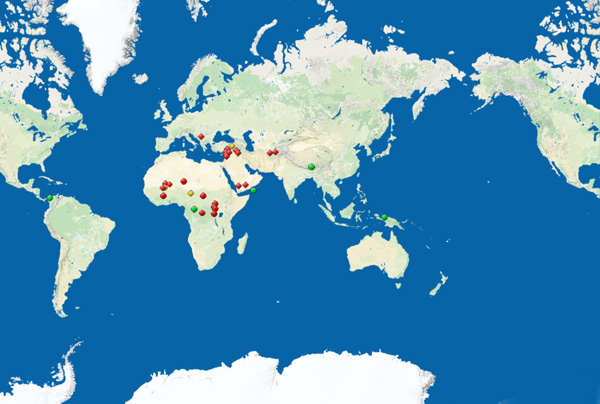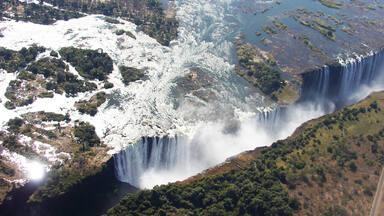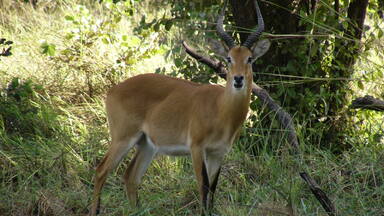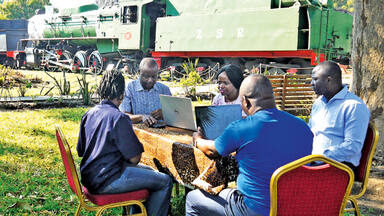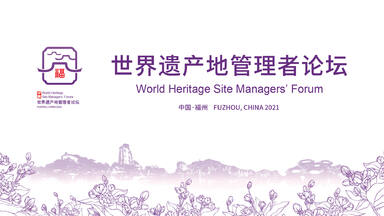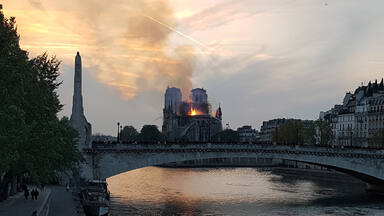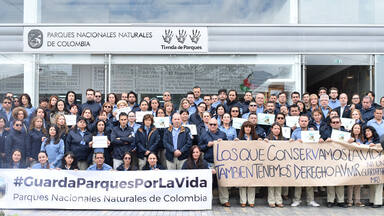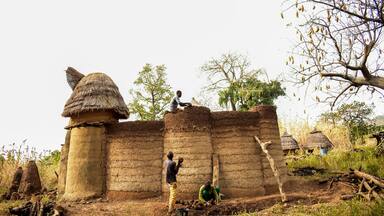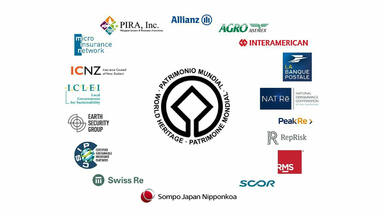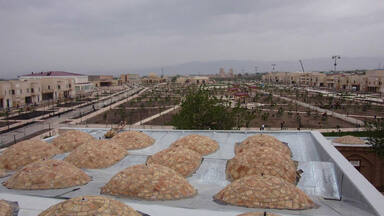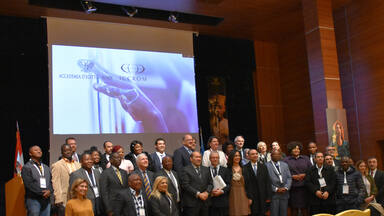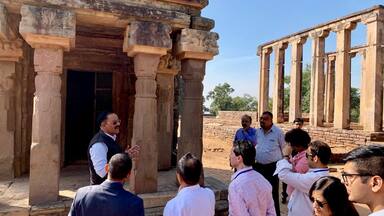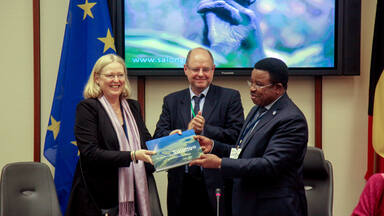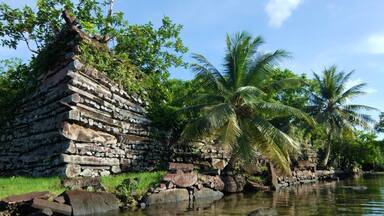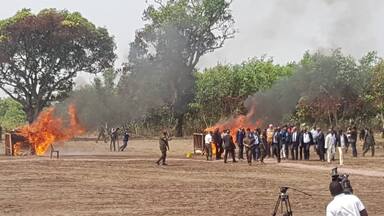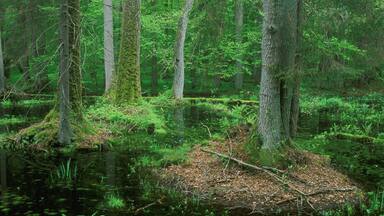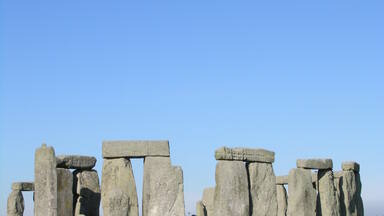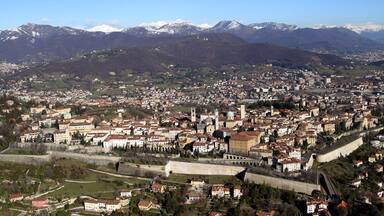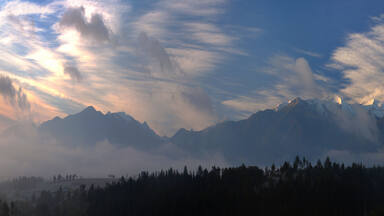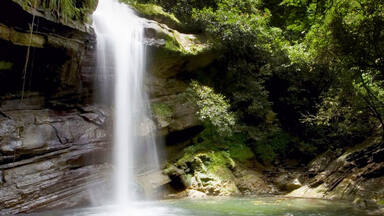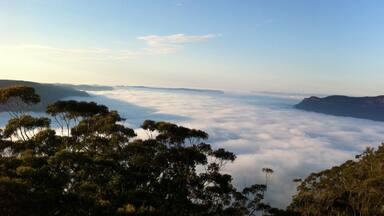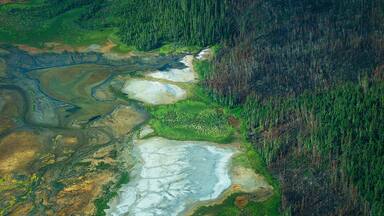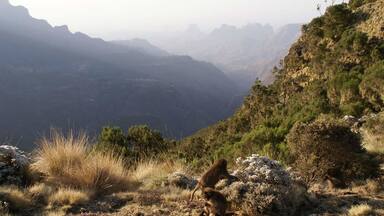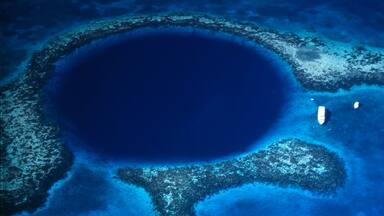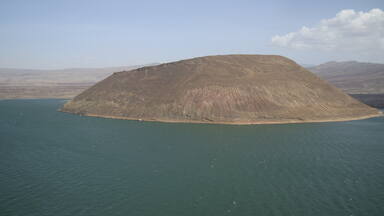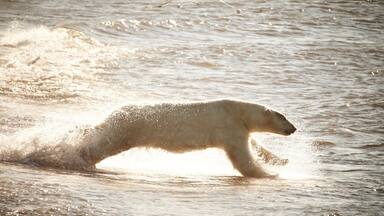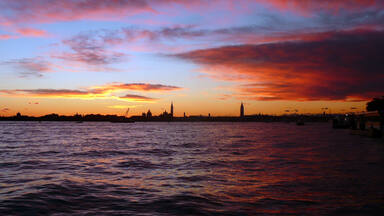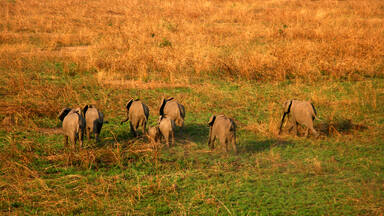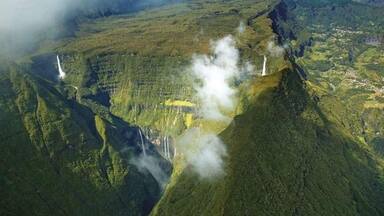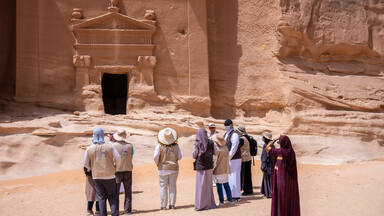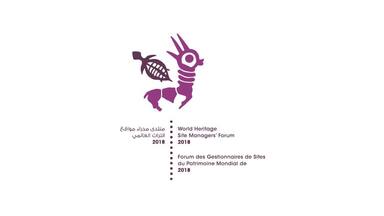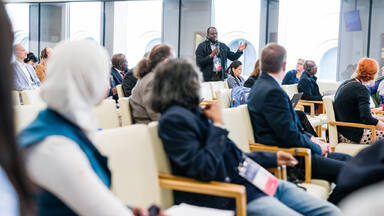The Information System offers you a trove of reliable data on the state of conservation of World Heritage properties since 1979 and the threats they have faced in the past, or are currently facing. Through this tool, you can get access to thousands of reports and decisions adopted by the World Heritage Committee, as part of one of the most comprehensive monitoring systems of any international convention.
Search and Filter
Statistics
Get a statistical insight of the conservation of World Heritage since 1979
Number of properties examined each year
Distribution of the properties examined since 1979, per region
Distribution of the properties examined since 1979, per category of heritage
Numbers
Statistical analysis
1979-2013
Analysis of the factors having
a negative impact on World Heritage properties
States Parties and Regions
Search by Region
Africa Arab States Asia and the Pacific Europe and North America Latin America and the CaribbeanSearch by State Party
Afghanistan Albania Algeria Andorra Angola Antigua and Barbuda Argentina Armenia Australia Austria Azerbaijan Bahamas Bahrain Bangladesh Barbados Belarus Belgium Belize Benin Bhutan Bolivia (Plurinational State of) Bosnia and Herzegovina Botswana Brazil Brunei Darussalam Bulgaria Burkina Faso Burundi Cabo Verde Cambodia Cameroon Canada Central African Republic Chad Chile China Colombia Comoros Congo Cook Islands Costa Rica Côte d'Ivoire Croatia Cuba Cyprus Czechia Democratic People's Republic of Korea Democratic Republic of the Congo Denmark Djibouti Dominica Dominican Republic Ecuador Egypt El Salvador Equatorial Guinea Eritrea Estonia Eswatini Ethiopia Fiji Finland France Gabon Gambia Georgia Germany Ghana Greece Grenada Guatemala Guinea Guinea-Bissau Guyana Haiti Holy See Honduras Hungary Iceland India Indonesia Iran (Islamic Republic of) Iraq Ireland Israel Italy Jamaica Japan Jordan Kazakhstan Kenya Kiribati Kuwait Kyrgyzstan Lao People's Democratic Republic Latvia Lebanon Lesotho Liberia Libya Lithuania Luxembourg Madagascar Malawi Malaysia Maldives Mali Malta Marshall Islands Mauritania Mauritius Mexico Micronesia (Federated States of) Monaco Mongolia Montenegro Morocco Mozambique Myanmar Namibia Nauru Nepal Netherlands (Kingdom of the) New Zealand Nicaragua Niger Nigeria Niue North Macedonia Norway Oman Pakistan Palau Panama Papua New Guinea Paraguay Peru Philippines Poland Portugal Qatar Republic of Korea Republic of Moldova Romania Russian Federation Rwanda Saint Kitts and Nevis Saint Lucia Saint Vincent and the Grenadines Samoa San Marino Sao Tome and Principe Saudi Arabia Senegal Serbia Seychelles Sierra Leone Singapore Slovakia Slovenia Solomon Islands Somalia South Africa South Sudan Spain Sri Lanka State of Palestine Sudan Suriname Sweden Switzerland Syrian Arab Republic Tajikistan Thailand Timor-Leste Togo Tonga Trinidad and Tobago Tunisia Türkiye Turkmenistan Tuvalu Uganda Ukraine United Arab Emirates United Kingdom of Great Britain and Northern Ireland United Republic of Tanzania United States of America Uruguay Uzbekistan Vanuatu Venezuela (Bolivarian Republic of) Viet Nam Yemen Zambia ZimbabweMaps
Get geographical visualization of the conservation of World Heritage since 1979
Reactive Monitoring process
What is Reactive Monitoring?
It is the reporting by the World Heritage Centre and the Advisory Bodies to the World Heritage Committee on the state of conservation of specific World Heritage properties that are under threat.
Which properties are reported upon?
The properties to be reported upon are selected, among all those inscribed on the World Heritage List, according to the following considerations...
How are the state of conservation reports elaborated?
The World Heritage Centre and the Advisory Bodies review all information available on the state of conservation of the properties foreseen for examination by the World Heritage Committee at its next session...
What are the decisions of the World Heritage Committee?
Subsequently to the examination of the SOC report during its ordinary session, the World Heritage Committee adopts a decision, which may take one or more of the following steps...
Why were some properties examined by the Bureau of the World Heritage Committee?
Since the early years of the World Heritage Convention (1979) until 2002, the Bureau had a substantial role in the coordination of the work of the Committee to the extent of examining all the reports on the state of conservation...
Don’t confuse Reactive Monitoring with the Periodic Reporting exercise
World Heritage properties are also reported on through the Periodic reporting exercise. Indeed...
Threats
The standard list of threats/factors affecting the Outstanding Universal Value of World Heritage properties consists of a series of 14 primary factors, encompassing each a number of secondary factors.
Useful tools and Guidance
Guidance and Advice notes
Resource Manuals
World Heritage Paper Series
Some useful Recommendations / Policies /
Strategies and Statements
- Recommendation concerning the Protection, at National Level, of the Cultural and Natural Heritage (1972)
- Policy Document for the Integration of a Sustainable Development Perspective into the Processes of the World Heritage Convention (2015)
- Policy Document on Impacts of Climate Change and World Heritage (2007)
- Strategy for Reducing Risks from Disasters at World Heritage properties (2007)
- Recommendation on the Historic Urban Landscape, including a glossary of definitions (2011)
- International Council on Mining and Metals (ICMM) - Mining and protected areas; Position statement (2003)
Reporting formats
Format for the submission of State of conservation reports
by the States Parties
Other useful online tools
Partners
Advisory Bodies to the World Heritage Committee
- ICCROM (International Centre for the Study of the Preservation and Restoration of Cultural Property)
- ICOMOS (International Council on Monuments and Sites)
- IUCN (International Union for Conservation of Nature)
Other UNESCO Conventions and Programmes
- Convention for the Protection of Cultural Property in the Event of Armed Conflict (1954) and its Second Protocol (1999)
- Convention on the Means of Prohibiting and Preventing the Illicit Import, Export and Transfer of Ownership of Cultural Property (1970)
- Intergovernmental Committee for Promoting the Return of Cultural Property to its Countries of Origin or its Restitution in case of Illicit Appropriation (1978)
- Convention on the Protection of the Underwater Cultural Heritage (2001)
- Convention for the Safeguarding of Intangible Cultural Heritage (2003)
- UNESCO Global Geoparks
- Man and the Biosphere Programme (MAB)
Other conventions and agreements
- Convention on Biological Diversity (CBD)
- Convention on International Trade in Endangered Species of Wild Fauna and Flora (CITES)
- Convention on the Conservation of Migratory Species of Wild Animals (CMS)
- International Treaty on Plant Genetic Resources for Food and Agriculture
- International Plant Protection Convention (IPPC)
- Ramsar (Convention on Wetlands)
- International Whaling Commission (IWC)
- Agreement on the Conservation of African-Eurasian Migratory Waterbirds (AEWA)
- United Nations Convention to Combat Desertification (UNCCD)
- United Nations Framework Convention on Climate Change (UNFCCC)
- International Council on Mining & Metals (ICMM) - Mining and Protected Areas
Decisions (32)
The World Heritage Committee,
- Having examined Document WHC/23/45.COM/10C,
- Recalling Decision 44 COM 10B adopted at its extended 44th session (Fuzhou/Online, 2021),
- Welcomes the progress made in the follow-up of the implementation of the Third Cycle of Periodic Reporting Action Plan in the Africa region (2021-2027);
- Expresses its appreciation to the African World Heritage Fund for its follow-up on the implementation of the Action Plan for Africa (2021-2027);
- Notes with appreciation the financial contribution of the Governments of China, France, Japan, the Netherlands, Norway, Switzerland and the Sultanate of Oman, to the activities carried out in the framework of the implementation of the Action Plan 2021-2027 for the Africa region;
- Calls upon States Parties to financially and technically support the implementation of the Regional Action Plan for the Africa Region through follow-up activities with the UNESCO World Heritage Centre, the Advisory Bodies, the École du patrimoine mondial africain and the African World Heritage Fund;
- Takes note with satisfaction of the creation of the African Site Managers Network, working to develop a network of African universities and five centres of excellence in each of the five subregions to empower local experts and better institutionalise capacity development in implementing the World Heritage Convention in Africa and, notably, in synergy with the other UNESCO Culture Conventions;
- Requests the UNESCO World Heritage Centre, in collaboration with the Advisory Bodies, the African World Heritage Fund and with the support of States Parties, to continue its efforts to coordinate and implement the Regional Capacity Building Programme according to the Action Plan 2021-2027;
- Acknowledges with appreciation that the Strategy for World Heritage in Africa was informed by an inclusive consultation process, which included the seven Arab States located in the African Continent, and that it is aligned with the regional Action Plans for Africa and the Arab States;
- Also acknowledges with appreciation that the outcomes of the UNESCO World Conference on Cultural Policies and Sustainable Development – MONDIACULT 2022 (Mexico City, 2022), and the reflections undertaken at the international conference The Next 50 - The Future of World Heritage in Challenging Times, Enhancing Resilience and Sustainability (Delphi, 2022), as well as the Yaoundé Call to Action adopted at the Sub-Regional Celebration of the 50th Anniversary of the UNESCO World Heritage Convention in Central Africa (Yaoundé, 2022) have been taken into consideration in the implementation of activities carried out thereafter;
- Further reminds States Parties of the Africa region, which have not already done so, to submit their Retrospective Statements of Outstanding Universal Value by 1 February 2024 at the latest, as well as clarifications of boundaries by 1 December 2023 at the latest;
- Reiterates its request to the UNESCO World Heritage Centre to monitor the implementation of the Regional Action Plan, in collaboration with the African World Heritage Fund, in view of preparing a mid-cycle assessment report to be presented to the World Heritage Committee at its 46th session.
The World Heritage Committee,
1. Having examined Document WHC-11/35.COM/12B,
2. Recalling Decision 32 COM 10 adopted at its 32nd session (Quebec City, Canada, 2008), Decision 33 COM 14A.2 adopted at its 33rd session (Seville, Spain, 2009), 34 COM 12 adopted at its 34th session (Brasilia, Brazil, 2010) and Resolution 17 GA 9 adopted at the 17th General Assembly of States Parties (UNESCO Headquarters, 2009);
3. Expresses its appreciation to the States Parties of Bahrain and Australia and the UNESCO World Heritage Centre for organizing the expert meeting on the decision-making procedures of the statutory organs of the World Heritage Convention (Manama, Bahrain, 15-17 December 2010), and notes the report provided by the participants (Document WHC-11/35.COM/12B);
Amendments to Rules of Procedure
4. Adopts the following amendments to its Rules of Procedure:
Rule 8.3. The United Nations and organizations of the United Nations system, as well as, upon written request, at least 15 days prior to the date of the session of the Committee, other international governmental and non-governmental organizations, permanent observer missions to UNESCO and non profit-making institutions having activities in the fields covered by the Convention, [according to criteria defined by the World Heritage Committee,] may be authorized by the Committee to participate in the sessions of the Committee as observers.
Rule 14. Duties of the Chairperson, [Vice-Chairpersons and Rapporteur]
14.1 In addition to exercising the powers which are conferred upon him elsewhere by the present Rules, the Chairperson shall open and close each plenary meeting of the Committee. He shall direct the discussions, ensure observance of these Rules, accord the right to speak, put questions to the vote and announce decisions. He shall rule on points of order and, subject to the present Rules, shall control the proceedings and the maintenance of order. He shall not vote, but he may instruct another member of his delegation to vote on his behalf. [He shall work, with the assistance of the vice-chairpersons at his discretion, to anticipate and address potentially contentious issues, including out of session.] He shall exercise all other functions given to him by the Committee.
14.2 [Should the Chairperson be absent during a meeting, or any part thereof, he shall be replaced by a Vice-Chairperson.] A Vice-Chairperson acting as Chairperson shall have the same powers and duties as the Chairperson.
14.3 The Chairperson and Vice-Chairperson, or Vice-Chairpersons, of a subsidiary body of the Committee shall have the same duties with regard to the bodies over which they are called upon to preside as the Chairperson and the Vice-Chairpersons of the Committee.
[14.4 In addition to exercising the powers which are conferred upon him elsewhere by the present Rules, the Rapporteur shall certify that the Secretariat has accurately recorded the Committee's decisions. He shall work with the Secretariat to monitor and record Committee debate on amendments.]
Rule 22. Order and time-limit of speeches
22.1 The Chairperson shall call upon speakers in the order in which they signify their wish to speak.
22.2 The Chairperson may limit the time allowed to each speaker if the circumstances make this desirable.
[22.3 The Chairperson, at his discretion, shall call on speakers from the Advisory Bodies and the Secretariat prior to the Committee taking a final decision.]
22.4 The representatives of organizations, individuals and observers referred to in Rules 6, 7 and 8 may address the meeting with the prior consent of the Chairperson.
[22.5 The Chairperson shall put Committee members' questions to a State Party once at the end of the Committee's debate on the property]
[22.6 Committee members shall not speak to World Heritage properties in their own territories, except at the explicit invitation of the Chairperson and in response to specific questions posed. Advocacy in favour of a particular proposal will not be entertained.]
22.7 Representatives of a State Party, whether or not a member of the Committee, shall not speak to advocate the inclusion in the World Heritage List of a property nominated, [the state of conservation of a property on their territory] or the approval of an assistance request submitted by that State Party, but only to deal with a point of information in answer to a question. This provision also applies to other observers mentioned in Rule 8.
Responsibilities of Statutory Organs
5. Requests the World Heritage Centre to present a study, for consideration at the 36th session of the World Heritage Committee (2012), on options for:
a) oversight and monitoring mechanisms for the statutory organs of the World Heritage Convention to ensure that actions associated with priority policy issues are implemented, and
b) enhancing the role of the Bureau in facilitating the work of the Committee (without it assuming a decision-making role);
Expert meetings
6. Also requests the World Heritage Centre to develop and present annually a consolidated list of all proposed meetings in order for the Committee to decide which to sanction on the basis of priorities and available resources (human and financial), and encourages the option to hold virtual meetings where appropriate;
7. Requests the World Heritage Centre to clarify the different types and categories of expert meetings and decides that all meetings attended by the Secretariat should be documented in the Report on the Secretariat's activities to the Committee;
Conduct of statutory meetings
8. Decides that policy discussions in the Committee should be organised to enable participation by all States Parties through the use of Consultative Groups, or the recognition of requests for interventions from non-members of the Committee on policy agenda items, at the discretion of the Chair;
9. Decides that three regular (not extended) sessions of the Committee should be held each biennium as follows:
a) Even years - host country; agenda: reports, budget, nomination and state of conservation reports,
b) Odd years - host country; agenda: reports, budget, nomination and state of conservation reports, and
c) Odd years - UNESCO Headquarters immediately after the General Assembly, (which should be held within the period of UNESCO's General Conference ); agenda: strategic and policy issues and as necessary, reports on the state of conservation needing urgent examination;
10. Recognizes the need to improve processes for monitoring the state of conservation of World Heritage properties as a means of reducing workload, and decides to default to a minimum two-year cycle for the examination of state of conservation reports for individual properties on the World Heritage List, and for the discussion of those inscribed on the List of World Heritage in Danger, except for cases of utmost urgency;
11. Decides to establish a four-year cycle for updating the Operational Guidelines and that the Operational Guidelines should be restricted to operational guidance, and that a new document, "Policy Guidelines", be developed as a means to capture the range of policies that the Committee and the General Assembly adopt;
12. Decides to develop "Policy Guidelines" for the implementation of the World Heritage Convention, drawing in part on the results of expert meetings and consultative bodies;
13. Decides to establish a standing consultative body for review of the Committee's biennial budget;
14. Recommends Committee members consider refraining from bringing forward new nominations that might be discussed during their term serving on the Committee, without prejudice to nomination files already submitted, deferred or referred during previous Committee sessions, or nominations from least represented States Parties and that this provision be implemented on an experimental basis and be reviewed at its 38th session in 2014;
15. Also recommends that States Parties already well represented on the World Heritage List should exercise restraint in bringing forward new nominations in order to achieve a better balance of the List;
16. Requests States Parties to consider refraining from providing additional information regarding nominations and/or state of conservation issues after the deadlines indicated in the Operational Guidelines, as this information is not able to be evaluated by the Advisory Bodies;
Capacity building for participation in statutory meetings
17. Requests the World Heritage Centre and Advisory Bodies to:
a) Include the orientation/induction session for Committee members on the annual Committee agenda and invite the direct participation of the Chairperson and Rapporteur,
b) Cooperate to develop tools to support Committee members, including a guide to standard language adopted in decisions, an updated searchable database of decisions, simple explanations of key procedures (especially voting procedures) and a republished edition of the Basic Texts,
c) Assess the advantages and disadvantages of merging the referral and deferral options for consideration of a nomination into a single mechanism, and give consideration to elaborating a proposal for draft amendments to paragraphs 159 and 160 of the Operational Guidelines in this regard,
d) Provide a simple explanation for consideration at the 36th session of the Committee of the processes and methods used to evaluate nominations and the state of conservation of World Heritage properties,
e) Develop further capacity building activities for the Chairperson, Rapporteur and Committee members, including through the systematic explanation of documents to States Parties;
Guidance on draft decisions
18. Also requests the World Heritage Centre to ensure that draft decisions:
a) Are concise and focused on issues central to the Convention (notably on matters related to Outstanding Universal Value),
b) Be limited to consideration of priority issues, and
c) Include, for inscription of properties on the List of World Heritage in Danger, a costed programme of operations needed, as relevant, based on the desired state of conservation for the removal of the property of the List of World Heritage in Danger, as required in article 11.4 of the Convention and encourages the use of the international assistance in meeting these needs;
19. Also decides to enhance consistency, and as a standard practice, draft decisions addressing:
a) Development threats, recommend use of Environmental Impact Assessment/Heritage Impact Assessment,
b) Lack of capacity, recommend assessments of management effectiveness,
c) Funding required for particular actions, recommend applications for International Assistance from the World Heritage Fund;
20. Requests the World Heritage Centre to develop standard modular costs for core activities for consideration at the 36th session of the World Heritage Committee, to enable the Committee to assess the costs and workload implications of decisions for all stakeholders (States Parties, Committee, Secretariat, Advisory Bodies) prior to adoption;
Transparency of documents and statutory meetings
21. Requests the World Heritage Centre and Advisory Bodies to continue the reflection on the best way for the States Parties to engage in a constructive dialogue with the Advisory Bodies during the assessment of the nominations processes, and with the Advisory Bodies and the Secretariat during the reactive monitoring process;
22. Decides that World Heritage Committee meetings should be live-streamed over the web and requests the World Heritage Centre to strengthen relations with media, including through media briefings prior to the opening of Committee sessions, capacity building for journalists on World Heritage matters, regular interface between the media and the Chairperson during Committee sessions and media training for the Chairperson and representatives of the Advisory Bodies and decides to open the meetings to accredited journalists;
23. Requests the World Heritage Centre to transmit Advisory Body evaluation reports to the relevant States Parties as soon as they are finalised, to allow time for proper dialogue and to make working documents public, at the time of their distribution to the States Parties.
Read more about the decisionThe World Heritage Committee,
1. Having examined Document WHC-11/35.COM/INF.7C,
2. Recalling Decision 32 COM 10 adopted at its 32nd session (Quebec City, 2008), Decision 33 COM 14A.2 adopted at its 33rd session (Seville, 2009), 34 COM 12 adopted at its 34th session (Brasilia, 2010) and Resolution 17 GA 9 adopted at the 17th General Assembly of States Parties (UNESCO Headquarters, 2009),
3. Expresses its appreciation to the States Parties of Australia and Senegal and the UNESCO World Heritage Centre for organising the expert meeting on global state of conservation challenges of World Heritage properties (Dakar, Senegal, 13-15 April 2011);
4. Notes the report provided by the participants at the above-mentioned expert meeting;
5. Invites contributions of relevant expertise and financial resources to assist States Parties implement decisions on the state of conservation of World Heritage properties;
6. Reiterates that nominations of properties for inscription on the World Heritage List must demonstrate Outstanding Universal Value in line with the criteria for inscription and comply with integrity/authenticity, protection and management requirements, as set out in the Operational Guidelines;
7. Requests the World Heritage Centre and the Advisory Bodies to develop guidance, for consideration at the 36th session of the World Heritage Committee, to clarify:
a) The uses, limits and documentation requirements for traditional management (paragraphs 108 and following),
b) The need for Environmental Impact Assessments/Heritage Impact Assessments of potential developments' impact on Outstanding Universal Value, the range of proposed activities with a likely impact on Outstanding Universal Value to be reported on and the documentation required by the World Heritage Centre (Paragraph 172), and
c) Buffer zones or other protection mechanisms, noting the recommendations contained in document WHC-08/32.COM/7.1;
8. Requests that aspects concerning partnerships should be dealt with after the report of the external auditor on PACT at the 18th General Assembly of States Parties;
9. Requests the World Heritage Centre and the Advisory Bodies to develop options to strengthen and improve the state of conservation reporting process, in particular to increase dialogue with States Parties about World Heritage properties facing challenges;
10. Also requests the World Heritage Centre to formally notify States Parties of the state of conservation reports on World Heritage properties on their territory which will be the subject of examination by the Committee at the session indicated;
11. Also requests the World Heritage Centre to report at the 36th session of the World Heritage Committee on possible ways to encourage United Nations recognition for the protectors of World Heritage properties in conflict and post conflict zones, including through the use of blue/green berets or other appropriate insignia, and reminds States Parties to include details of Disaster Risk Reduction/Emergency Planning arrangements in their nomination dossiers and management plans;
12. Further requests the World Heritage Centre, in collaboration with the Advisory Bodies, in addition to the presentation of state of conservation reports on individual properties, to prepare a thematic report on significant global and regional factors negatively impacting the Outstanding Universal Value of the properties, grouped according to the five categories of factors affecting the Outstanding Universal Value identified in the Periodic Report questionnaire, Section II, to ensure a greater coherence in the decision making on individual sites;
13. Requests the World Heritage Centre and the Advisory Bodies to provide, in the state of conservation reports on individual properties, a link to an integrated online database compiling all relevant background information concerning the property (previous state of conservation reports and Committee decisions, desired state of conservation, corrective measures, International Assistance requests, etc.) necessary for well-informed decision-making, to be hosted on the World Heritage Centre's website;
14. Also requests the Advisory Bodies to develop a database of existing guidance on key factors negatively impacting on the Outstanding Universal Value of World Heritage properties and tools for best management practice;
15. Recalling that being a signatory to the World Heritage Convention entails certain responsibilities, including a requirement to follow the Operational Guidelines, management of World Heritage properties according to the highest international standards, promotion of good governance and allocation of adequate funding for the protection of World Heritage properties, encourages States Parties to:
a) Develop adequate legislative frameworks to ensure compliance with the Operational Guidelines and set up a collaborative framework between agencies for the conservation of properties, including agencies in charge of the follow up of other conventions and international agreements,
b) Source assistance and support beyond what is available under the UNESCO World Heritage Fund, noting that tools, methodology and guidance are available both internationally and nationally from the Advisory Bodies and the World Heritage Centre and additional support should be sought from other donors, NGOs and international organizations,
c) Be proactive in relation to development and conservation of World Heritage properties by conducting a Strategic Environmental Assessment (SEA) at the time of nomination to anticipate the impact of any potential development on the Outstanding Universal Value,
d) Ensure that EIA/HIA are conducted for development projects which could affect properties and that these specifically assess the impact on the Outstanding Universal Value of properties,
e) Involve indigenous peoples and local communities in decision making, monitoring and evaluation of the state of conservation of the properties and their Outstanding Universal Value and link the direct community benefits to protection outcomes,
f) Respect the rights of indigenous peoples when nominating, managing and reporting on World Heritage sites in indigenous peoples' territories;
g) Establish and promote horizontal cooperation and understanding among various institutions that have an impact on cultural and natural heritage, also including governmental institutions responsible for UNESCO programmes implementation on national level, economy, finance, regional development/ planning, tourism, social welfare as well as local authorities,
h) Follow the Recommendation concerning the Protection, at National Level, of the Cultural and Natural Heritage, adopted simultaneously with the World Heritage Convention, by the General Conference of UNESCO on 16 November 1972.
Read more about the decisionThe World Heritage Committee,
1. Having examined Document WHC-10/34.COM/7C,
2. Recalling Decisions 32 COM 7B.129 and 33 COM 7C, adopted at its 32nd (Quebec City, 2008) and 33rd (Seville, 2009) sessions respectively,
3. Welcomes the analytical summary of the perceived trends, changes and threats to the state of conservation of World Heritage properties over the past five years (2005-2009), as the basis for further reflection and more extensive analysis of this information;
4. Considers that this work highlights the need for more systematic monitoring of threats and of how to identify and react to emerging trends;
5. Suggests that data on the emergence of trends and on the underlying reasons for the emergence of trends could be helpful to States Parties, to the World Heritage Centre and to the Advisory Bodies;
6. Notes that the availability and application of satellite imagery and other remote sensing techniques are continually improving, and also notes that such techniques can provide evidence over time to determine whether some impacts on World Heritage values continue to occur or are being addressed;
7. Requests that the Advisory Bodies, and in particular IUCN, work with the World Heritage Centre, the UNESCO Science Sector, and relevant remote sensing agencies, to examine the feasibility of using remote sensing to help assess the potential contribution that it could make to the monitoring of certain threats to the Outstanding Universal Value of properties;
8. Given the percentage of threats related to development and infrastructure projects and to high-rise buildings, stresses the need for structured heritage impact assessments of major projects to be carried out at the earliest opportunity in order to assess the impact of potential projects on the Outstanding Universal Value of World Heritage properties;
9. Recalls the provisions of Paragraph 172 of the Operational Guidelines and that prompt information on potential development projects and their review for impact on Outstanding Universal Value is a key tool for ensuring the effective conservation of World Heritage properties and the credibility of the Convention;
10. Taking into account the information provided in the introduction of Document WHC-10/34.COM/7B and specifically the impact of natural disasters affecting World Heritage properties, notes the progress made in the implementation of the Strategy for Disaster Risk Reduction at World Heritage properties as indicated in Document WHC-10/34.COM/7.3, as well as the newly published Resource Manual on this subject;
11. Also notes that the World Heritage Centre and the Advisory Bodies have considered the approaches for the selection of properties for state of conservation reports and processes for preparing Desired State of Conservation Statements for the removal of properties from the List of World Heritage in Danger and further notes that these will be subject to a further review at the next World Heritage Centre/Advisory Bodies meeting in September 2010;
12. Acknowledges the inclusion of links to illustrative material in the state of conservation reports which provide information on potential visual impact on the Outstanding Universal Value of a property and encourages the States Parties to share their experiences concerning visual impact studies and simulations by providing to the Word Heritage Centre links to relevant information to be made available through the web-page;
13. Requests the World Heritage Centre and the Advisory Bodies to report back on criteria, thresholds and processes relevant to the initiation of state of conservation reports, the feasibility of improved utilization of remote sensing, and the preparation and review of Desired State of Conservation Statements for the removal of properties from the List of World Heritage in Danger, for examination by the World Heritage Committee at its 35th session in 2011.
Read more about the decisionThe World Heritage Committee,
1. Having examined Documents WHC-09/33.COM/7B and WHC-09/33.COM/7B.Add,
2. Recalling Decision 32 COM 7B.129, adopted at its 32nd session (Quebec City, 2008),
3. Takes note of the process being followed to consult State Parties to ensure the accuracy of the state of conservation reports during their preparation, as presented in the introduction of Document WHC-09/33.COM/7B and requests the World Heritage Centre to make every effort to ensure that States Parties' input is included in these reports before they are distributed;
4. Recognizes the efforts on the inclusion of references in the Working Documents on State of Conservation to the image gallery of the web-pages of the World Heritage Centre and encourages States Parties to provide the World Heritage Centre, whenever possible, with verified electronic illustrative material;
5. Considers that its request, in Decision 32 COM 7B.129, to add a link to illustrative material also aimed at providing background information on cases indicating the potential of visual impact on the Outstanding Universal Value of a property and to make visual impact simulations provided by States Parties available to Members of the Word Heritage Committee;
6. Encourages States Parties to provide electronic illustrations of proposed projects in their State of Conservation Reports and to make these available to the Members of the World Heritage Committee;
7. Acknowledging the increasing number of State of Conservation reports and that reviewing these is a key tool for ensuring the effective conservation and credibility of World Heritage properties,
8. Noting the results of the analytical document on trends provided with Circular Letter CL/WHC-09/03 and the in-depth discussion that took place at the 32nd session of the World Heritage Committee,
9. Also noting the increasing number of natural disasters affecting World Heritage properties, requests the World Heritage Centre and the Advisory Bodies to prepare a report on the progress made in the implementation of the Strategy for Disaster Risk Reduction at World Heritage properties and submit it for the examination by the Committee at its 34th session in 2010,
10. Also considers it desirable to receive from the World Heritage Centre a methodological framework for the processes of:
a) Initiating the consideration of a property in the State of Conservation reports,
b) Requesting a State Party progress or state of conservation report within a defined timeframe, and
c) Evaluating desired State of Conservation Statements submitted by State Parties;
11. Requests the World Heritage Centre to:
a) Prepare, in cooperation with the Advisory Bodies, information on criteria, thresholds and processes applied for the initiation of State of Conservation reports and review of Desired State of Conservation statements for discussion at the 34th session of the World Heritage Committee in 2010;
b) Also prepare, in consultation with the Chairperson of the World Heritage Committee, a summary of the trends, changes and threats based on an analytical summary of the state of conservation of World Heritage properties over 5 years for discussion at the 34th session of the World Heritage Committee in 2010, with a view to make recommendations for prioritizing management efforts in the context of the Global Strategy;
12. Further requests the World Heritage Centre and the Advisory Bodies, when preparing state of conservation reports, to distinguish between issues that impact or have the potential to impact on a site's Outstanding Universal Value from issues that may impact values that are not recognized as being of Outstanding Universal Value;
13. Notes that all reactive monitoring missions proposed in the draft decisions on State of Conservation of properties on the World Heritage List and the List of World Heritage in Danger are currently suggested to be joint missions of the World Heritage Centre and at least one Advisory Body, and considers that this has the potential to increase the overall budgetary requirements for missions and human resources;
14. Requests the World Heritage Centre to introduce a section on proposed missions to the relevant State of Conservation reports which outlines the objectives of a proposed mission as well as the specific roles and tasks of all bodies involved;
15. Also notes the petition on the Role of Black Carbon in the endangering of World Heritage properties and encourages all States Parties to exchange information on existing national policies, regulations and opportunities for immediate voluntary action to control the generation of black carbon that can affect World Heritage properties;
16. Also requests the World Heritage Centre and Advisory Bodies to adopt a consistent approach to reporting on the impact of climate change on World Heritage properties and to ensure that future decisions in this respect are based on the Committee's Strategy to assist States Parties to implement appropriate management responses to climate change;
17. Further noting the profusion of terms used to describe the spatial and functional relationships among World Heritage properties, their buffer zones and the areas around these properties, requests the World Heritage Centre and the Advisory Bodies to develop a glossary of terms in this respect, as well as proposed revisions to the Operational Guidelines regarding buffer zones, taking into account the results of the Expert Meeting on this issue for consideration by the World Heritage Committee at its 34th session in 2010;
18. Also encourages all States Parties to fully implement paragraph 172 of the Operational Guidelines by informing the World Heritage Centre of restorations, constructions and other projects that may affect the Outstanding Universal Value of a property in their territory.
Read more about the decisionThe World Heritage Committee,
1. Having examined documents WHC-08/32.COM/7B, WHC-08/32.COM7B.Add and WHC-08/32.COM7B.Add2,
2. Recognizing that the state of conservation reports are an important tool for sustaining the World Heritage properties; and
3. Noting the discussion that took place at the 32nd session of the World Heritage Committee;
4. Requests the World Heritage Centre to:
a) prepare, after consultation with the Chairperson of the World Heritage Committee, an analytical summary of the state of conservation of the World Heritage discussed at the 32nd session (Québec City, 2008) identifying trends, by 1st November 2008, for distribution to the Committee members and discussion at the 33rd session in 2009;
b) identify issues emanating from the analytical summary, in consultation with the Advisory Bodies, to be discussed on relevant agenda items of the Committee, including the Reinforced Monitoring mechanism;
c) prepare a lexicon of terms and recommendations for their consistent application in state of conservation reports;
d) provide, where available, a printed Statement of Outstanding Universal Value, for properties on the List of World Heritage in Danger and those discussed for in-Danger listing;
e) add a link to illustrative material and relevant statements of Outstanding Universal Value, and attribute information to source and date;
5. Also requests the World Heritage Centre to identify a mechanism for consultation with States Parties during the development of the State of Conservation reports to ensure their accuracy.
Read more about the decisionThe World Heritage Centre,
1. Having examined Documents WHC-07/31.COM/7A, WHC-07/31.COM/7A.Add, WHC-07/31.COM/7A.Add.2, WHC-07/31.COM/7B, WHC-07/31.COM/7B.Add, WHC-07/31.COM/7B.Add.2,
2. Recalling Decisions 27 COM 7B.106 and 29 COM 7C, adopted at its 27th (UNESCO, 2003) and 29th (Durban, 2005) sessions respectively,
3. Invites the States Parties to use the following format for the submission to the World Heritage Centre of their report(s) on the state of conservation of World Heritage properties:
Format for preparing a State Party’s Report for World Heritage properties
(designed following the Advisory Bodies / World Heritage Centre meeting of 25-26 January 2007)
Name of World Heritage property (State Party) (Identification number)
1. Response from the State Party to the World Heritage Committee’s Decision, paragraph by paragraph
[Note: this information has to refer to developments over the past year or since the last decision of the Committee for this property]
or
- In case the property is inscribed on the List of World Heritage in Danger:
a) Corrective measures taken by the State Party in reply to the World Heritage Committee’s Decision(s)
b) Progress towards the removal of the property from the List of World Heritage in Danger
c) If needed, please describe the success factors or difficulties in implementing the corrective measures identified
[Note: please, provide factual information, including exact dates, figures etc. and provide comments separately]
d) Is the timeframe for the implementation of the corrective measures suitable? If not, please propose a justified alternative.
In all cases:
2. Other current conservation issues identified by the State Party
[Note: conservation issues which are not mentioned in the Decision of the World Heritage Committee or any information request from the World Heritage Centre]
3. In conformity with paragraph 172 of the Operational Guidelines, please describe any potential major restorations, alterations and/or new construction(s) within the protected area (core zone and buffer zone and/or corridors) that might be envisaged.
Read more about the decision
The World Heritage Committee,
1. Welcomes the initiatives of States Parties for architectural competitions for new buildings in World Heritage properties where compatible with the Outstanding Universal Value, including in historic neighbourhoods in the spirit of the Vienna Memorandum on "World Heritage and Contemporary Architecture, Managing the Historic Urban Landscape" (2005) ;
2. Encourages the States Parties, in preparing the competition documents, to inform the Secretariat, seek comments from the Advisory Bodies and inform the Committee according to paragraph 172 of the Operational Guidelines.
Read more about the decisionThe World Heritage Committee,
1. Having examined Document WHC-05/29.COM/7B.Rev,
2. Recalling Decision 7 EXT.COM 4B.1, adopted at its 7th extraordinary session (UNESCO, 2004), which invited the Director of the World Heritage Centre, in consultation with the Advisory Bodies, to submit at its 29th session proposals on ways and means of optimizing the interrelation between the results of the periodic reporting cycles and the conclusions derived from the state of conservation reports – in particular in order to ensure consistency and a better conservation of the properties,
3. Noting that discussions have taken place in this regard at a meeting of the Advisory Bodies and the World Heritage Centre (February, 2005) and at a Workshop on “Management Effectiveness, Monitoring for World Heritage Value and Statutory Reporting” (May, 2005),
4. Highlights that there are fundamental differences between the two processes of periodic reporting and reactive monitoring, as indicated in the Operational Guidelines;;
5. Calls for better linkages between both processes in the future, for example, through the following mechanism:
a) the Advisory Bodies and the World Heritage Centre should carefully consider information provided in the periodic reports corresponding to the relevant States Parties, when preparing state of conservation reports -in particular, by using the information provided on threats to the properties to focus the attention of reactive monitoring;
b) States Parties should take into account the content and decisions of previous state of conservation reports when preparing their propertyspecific periodic reports; and, in particular, provide an update on threats highlighted through the reactive monitoring process and on the measures taken by the State Party to mitigate these threats; and
c) A database currently being developed by the World Heritage Centre on World Heritage properties should allow for cross-referencing between state of conservation and periodic reports to enhance consistency in reporting mechanisms and to ensure that follow-up action is taken as necessary;
6. Requests the World Heritage Centre and the Advisory Bodies to take this issue up at the forthcoming meetings leading to and during the “reflection year” for the periodic reporting process.
Read more about the decisionThe World Heritage Committee,
1. Having examined Documents WHC-05/29.COM/7A and WHC-05/29.COM/7B.Rev,2. Wishing to motivate and assist State Parties to get properties removed from the List of World Heritage in Danger,
3. Encouraging greater international cooperation among States Parties in order to reduce the number of properties on the List of World Heritage in Danger,
4. Wishing to improve the consistency and effectiveness of state of conservation reports both with respect to properties on the World Heritage List and the List of World Heritage in Danger,
5. Reiterates that reports of missions to review the state of conservation of properties on the World Heritage List, in conformity with paragraph 173 of the Operational Guidelines, must include:
a) an indication of threats or significant improvement in the conservation of the property since the last report to the World Heritage Committee;
b) any follow-up to previous decisions of the World Heritage Committee to the state of conservation of the property; and
c) information on any threat or damage to or loss of outstanding universal value, integrity and/or authenticity for which the property was inscribed on the World Heritage List;
6. Emphasizes that whenever further action is needed, clear benchmarks are set indicating the corrective measures to be taken in order to achieve significant improvement of the conservation as well as a timeframe within which the benchmarks will have to be met;
7. Requests the full cooperation of States Parties, Advisory Bodies and the World Heritage Centre in the state of conservation reporting process;
8. Further requests that in addition to information about the amounts and purposes of international assistance of the World Heritage Fund received by a property, a state of conservation report should also indicate the amount of extra budgetary funds received or needed;
9. Decides to discuss further at its 30th session (Vilnius, 2006) the possibility of deferring the decision to inscribe new properties on the World Heritage List of a State Party that does not submit full reports requested by the Committee for two consecutive ordinary sessions of the Committee;
10. Decides, with respect to properties on the List of World Heritage in Danger, in accordance with Section IV.B of the Operational Guidelines:
a) to clearly identify the threats and dangers for which a property is to be inscribed on the List of World Heritage in Danger and how serious they are,
b) to set at the time of inscription on the List of World Heritage in Danger clear benchmarks indicating the corrective action to be taken to address the ascertained and potential dangers;
c) to set a timeframe within which the benchmarks will have to be met in order for a property to be removed from the List of World Heritage in Danger;
d) to request the World Heritage Centre and the Advisory Bodies for properties already on the List of World Heritage in Danger, for which at the time of inscription no benchmarks were set, to include in future reports regarding those sites benchmarks indicating the corrective action to be taken to address ascertained and potential dangers as well as a timeframe;
e) to request the Advisory Bodies to evaluate upon request of the State Party or of the Committee the impact of the ascertained and potential dangers on the outstanding universal value of World Heritage properties as set out in the Statement of outstanding universal value, referred to in paragraph 155 of the Operational Guidelines; and
f) to request States Parties to submit an annual report on the progress towards meeting the benchmarks within the timeframe set with respect to their properties on the List of World Heritage in Danger;
11. Also decides with respect to properties on the World Heritage List to explicitly discuss all state of conservation reports indicating non-compliance with Committee decisions, non-appliance of corrective measures or otherwise a lack of cooperation on the part of a State Party, as well as reports indicating difficulties encountered by a State Party in its efforts to conserve its sites (List A).
Read more about the decisionThe World Heritage Committee,
1. Requests the Secretariat in consultation with the Advisory Bodies, to ensure that all properties included in the future state of conservation documents, are treated in compliance with the procedures set out in the Operational Guidelines for the implementation of World Heritage Convention for reactive monitoring (paragraph 68, July 2002);
2. Requests that reports of missions to review the state of conservation of World Heritage properties include, as appropriate:
(a) an indication of threats or significant improvement in the conservation of the property since the last report to the World Heritage Committee,
(b) any follow-up to previous decisions of the World Heritage Committee on the state of conservation of the property,
(c) information on any threat or damage to or loss of outstanding universal value, integrity and/or authenticity for which the property was inscribed on the World Heritage List;
3. Further requests that the reports are categorized as follows:
(a) reports with recommended decisions which, in the judgment of the World Heritage Centre in consultation with the Advisory Bodies, require discussion by the World Heritage Committee,
(b) reports which, in the judgment of the World Heritage Centre in consultation with the Advisory Bodies, can be noted without discussion,
Reports in category (b) will not be discussed unless a request is made to the Chairperson of the World Heritage Committee in advance of the discussion of this agenda item;
4. Invites the World Heritage Centre to present all information on the state of conservation of properties inscribed on the World Heritage List in the following manner:
(a) the report on each property should start on a new page,
(b) the identification number of the property allocated at the time of its nomination should be used in the document,
(c) an index of all properties should also be included,
(d) the decisions should have a standard layout, draft recommendation, and should be concise and operational;
5. Reaffirms that the deadline to receive reports by the World Heritage Centre from States Parties is 1 February of each year.
Read more about the decisionThe World Heritage Committee,
1. Noting with concern, during the examination of the state of conservation of the properties inscribed on the World Heritage List, the multiplication of inappropriate pastiche buildings which falsify history,
2. Invites, in consequence, the States Parties to encourage a contemporary architecture of quality, respectful of the past, which integrates harmoniously with its environment.
Read more about the decisionThe World Heritage Committee,
Invites the Director-General to seek further coordination, and possibly the establishment of a permanent mechanism of consultation, with the World Bank on projects related to World Heritage properties.
Read more about the decisionThe World Heritage Committee,
Invites the Director-General to present a report and statistics on the state of conservation reports of properties inscribed on the World Heritage List and the List of World Heritage in Danger at its extraordinary session in March 2003.
Read more about the decision
